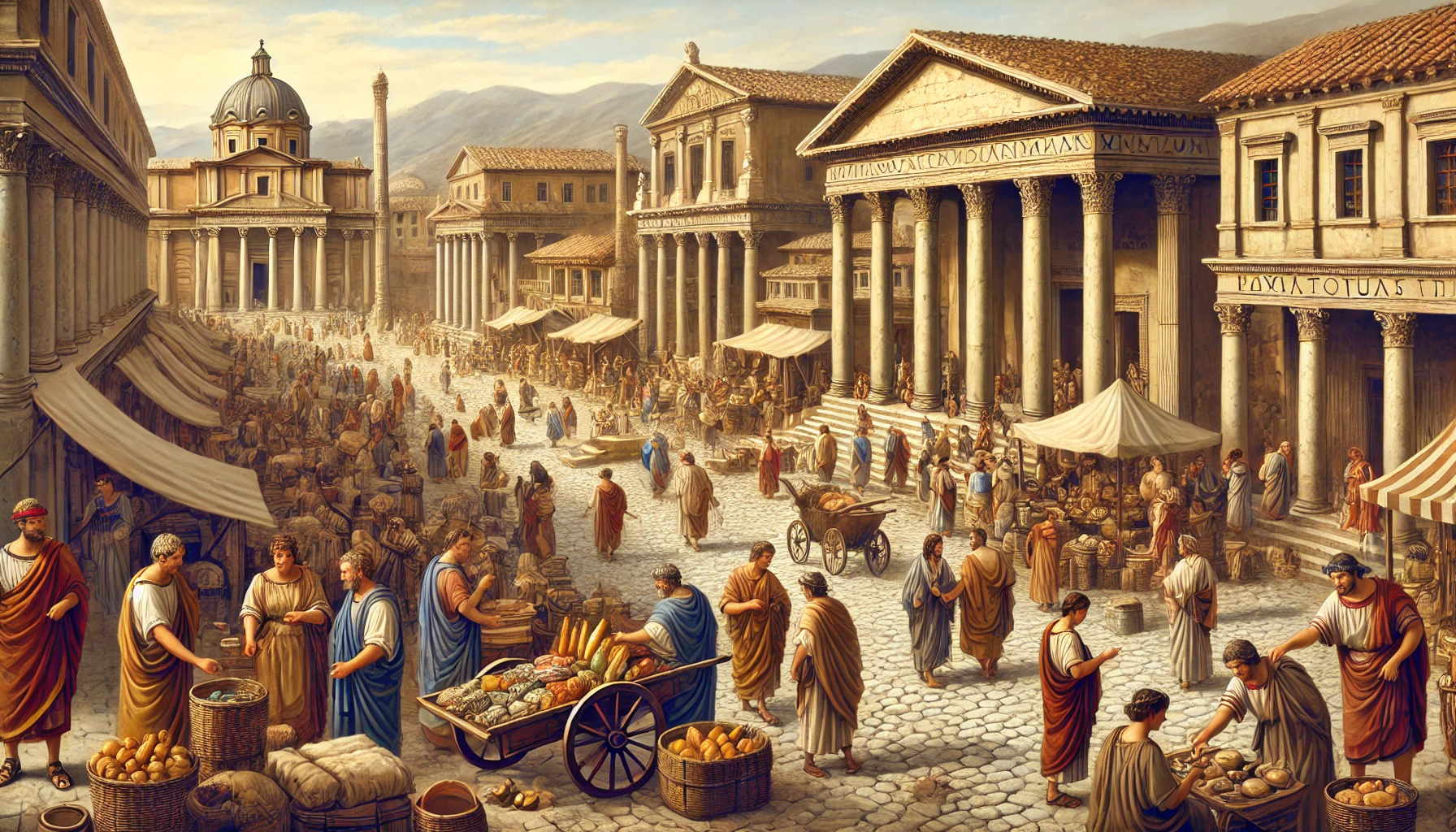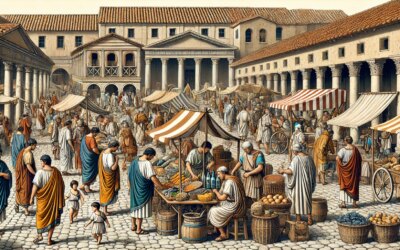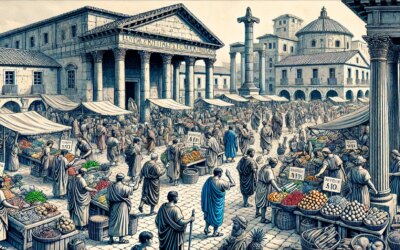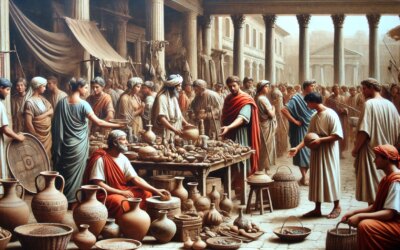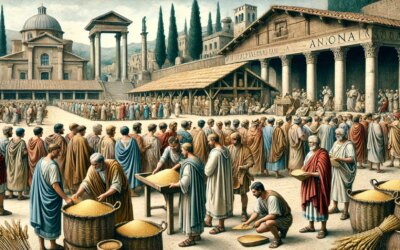Introduction
The bustling marketplaces of ancient Rome were more than just centers of trade—they were the lifeblood of the empire’s economy and social life. Known as fora (plural of forum), these spaces were where merchants, craftsmen, and citizens from all walks of life converged to buy and sell goods, exchange news, and engage in political discussions. From the grand Forum Romanum in the heart of the capital to the smaller provincial markets, Roman commerce played a crucial role in sustaining the empire’s vast network of cities and trade routes.
The Structure of a Roman Marketplace
A typical Roman marketplace was a well-organized space, often surrounded by colonnades and public buildings. The most famous of these was the Forum Romanum, which housed not only market stalls but also temples, government offices, and spaces for legal proceedings.
Marketplaces were divided into different sections, with each area specializing in specific goods. One might find a macellum (food market) filled with stalls selling fresh produce, meats, and fish, while another area housed artisans crafting pottery, jewelry, and textiles. Bakers, butchers, and spice traders filled the air with enticing aromas, making the market a sensory experience for visitors.
Trade and Commerce in the Roman World
Rome’s marketplaces thrived on a sophisticated economic system that connected distant provinces. Goods from across the empire flooded into local markets—olive oil from Hispania, spices from the East, grain from Egypt, and fine textiles from Gaul. The Roman currency, the denarius, facilitated trade, allowing merchants to exchange goods efficiently.
Trade was not limited to physical goods; marketplaces were also hubs for financial transactions. Money changers, bankers, and lenders operated within the forum, providing credit and loans that fueled economic activity. Contracts were signed, and deals were made in the bustling spaces of Rome’s economic centers.
The Social and Political Role of Marketplaces
Beyond commerce, the Roman marketplace was a key social space where citizens gathered to hear public announcements, witness legal disputes, and engage in political debates. Senators and magistrates often addressed the public in these spaces, making the forum not just a market but a focal point of civic life.
For ordinary Romans, a visit to the marketplace was an essential part of daily life. It was a place to catch up on gossip, meet friends, and even participate in religious ceremonies at the temples that often stood nearby. Street performers and philosophers would captivate audiences, adding to the lively atmosphere of these spaces.
The Decline and Legacy
As the Roman Empire declined in the late antiquity, so too did its marketplaces. Economic instability, invasions, and a shifting political landscape led to the gradual decline of urban centers. However, the concept of the marketplace as a hub of commerce and social life endured, influencing medieval and modern city planning.
Today, the ruins of ancient forums—such as the Forum Romanum in Rome—stand as reminders of the vibrant economic and cultural life that once flourished there. Many modern markets still reflect the principles of Roman commerce, demonstrating the lasting impact of these ancient economic centers.
Conclusion
The Roman marketplace was far more than a place of trade—it was a dynamic space that shaped the economic, social, and political fabric of the empire. Its influence continues to be felt today in the marketplaces and financial centers of modern cities, proving that Rome’s legacy lives on in ways we still experience daily.

